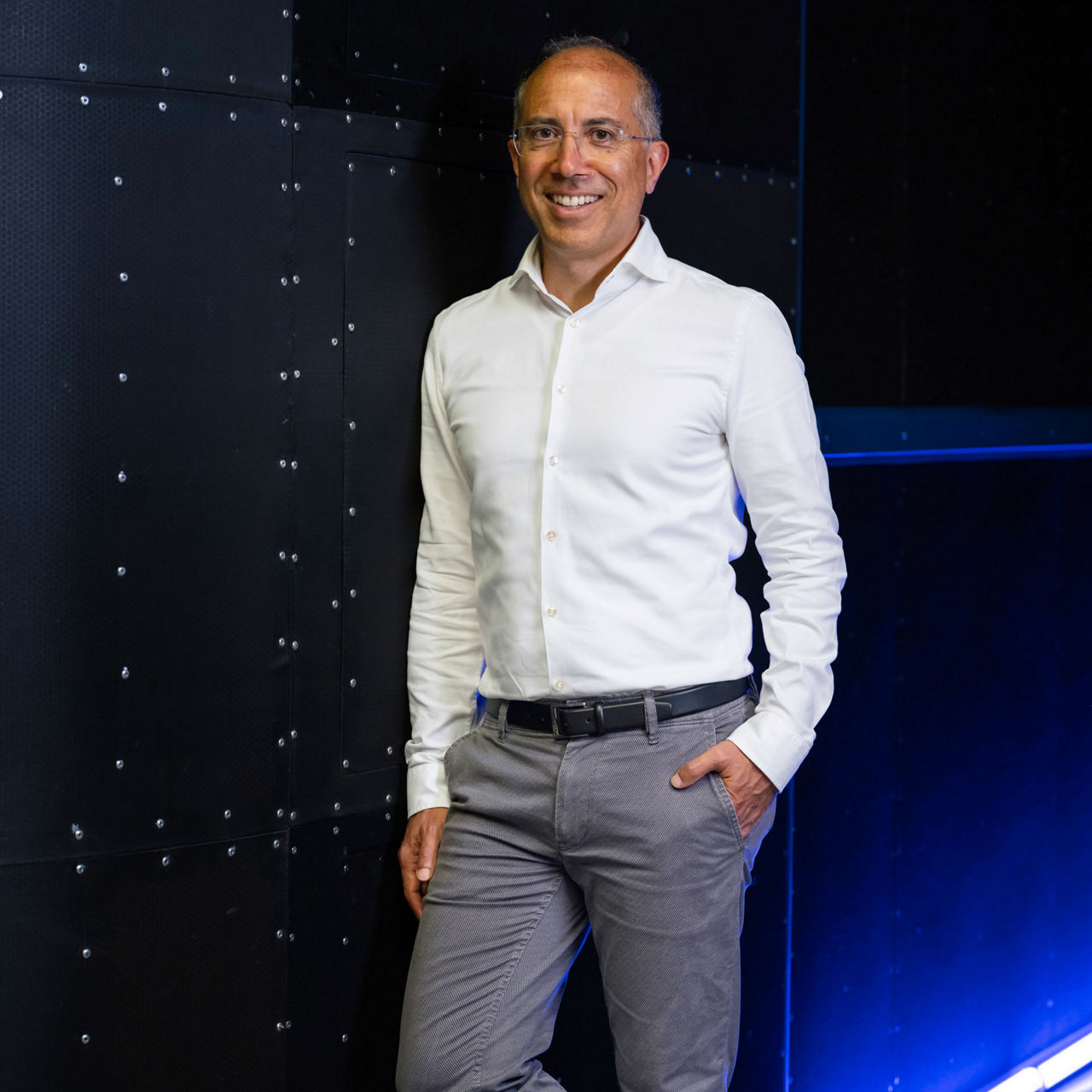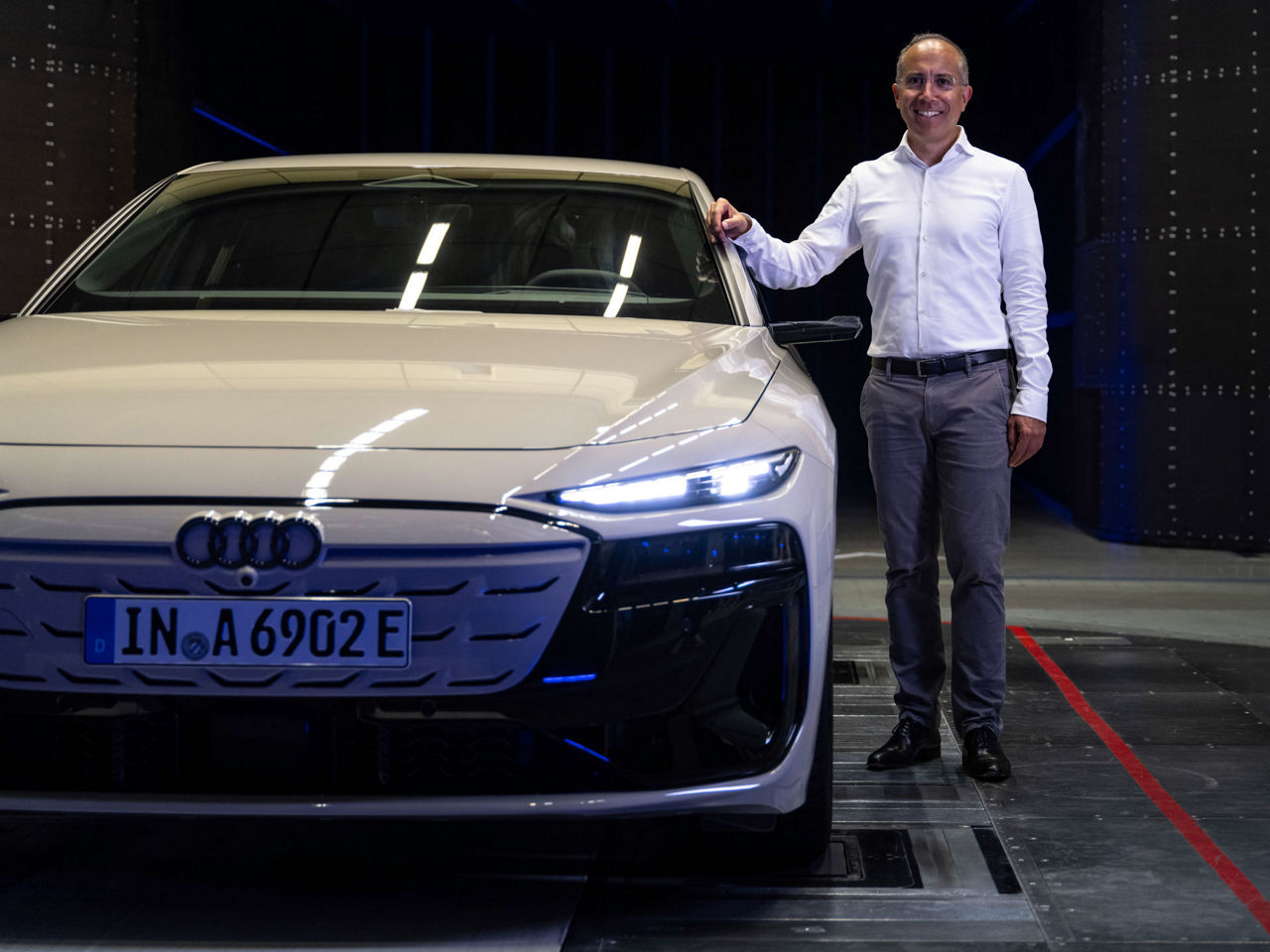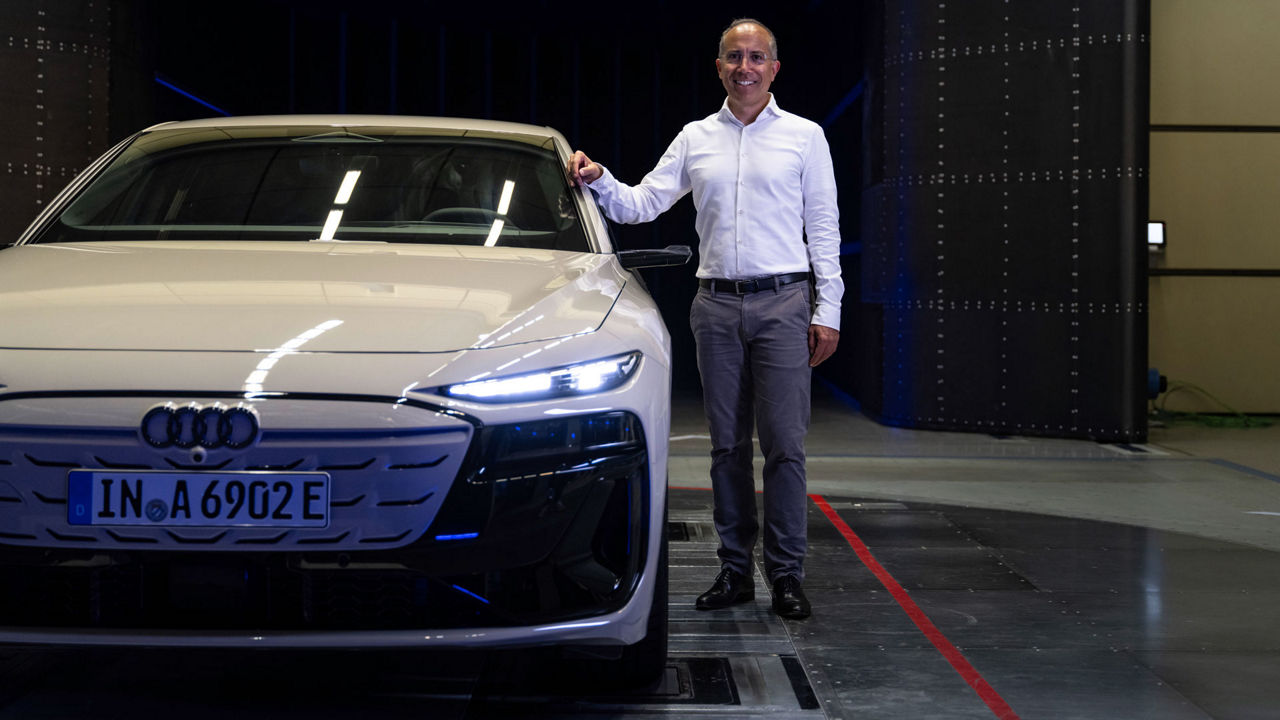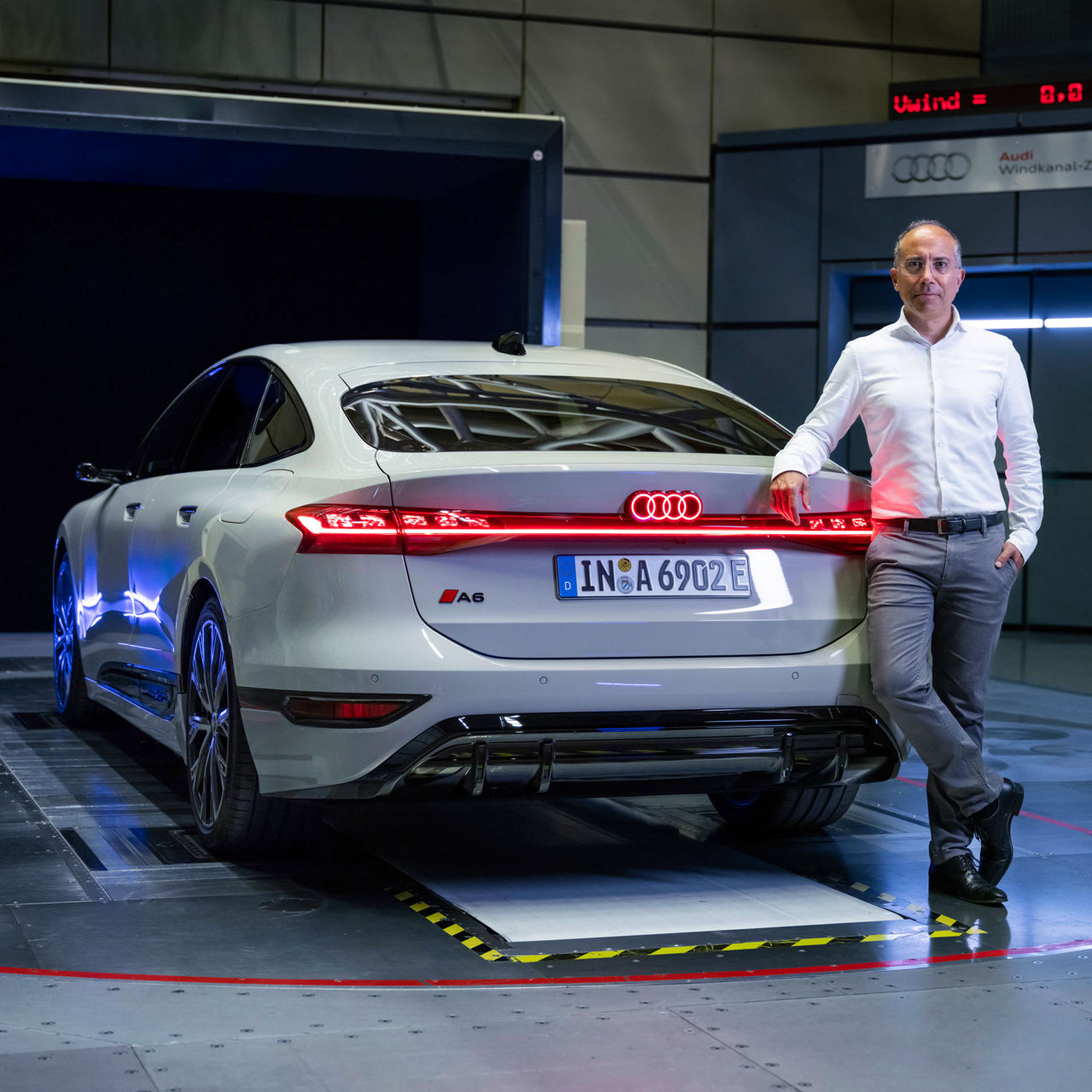With an exceptionally low Cd value of 0.21, the Audi A6 Sportback e-tron achieves the best value an Audi production vehicle has ever registered. How has this been accomplished? Moni Islam, Head of Aerodynamics/Aeroacoustics Development, provides answers in the Audi wind tunnel.
The tube, where wind speeds up to 300 km/h are possible, is 47 meters long. The wind tunnel at Audi in Ingolstadt has an enormous capacity, while the operating noise is extremely low. "When the tunnel is empty, and we ramp up the wind, you can't hear anything," says Moni Islam, Head of Aerodynamics/Aeroacoustics Development at Audi, and explains: "The tunnel has to be this quiet that we can hear the wind noise on the vehicle. This is the only way we can reduce it to a minimum." Islam should know. The wind tunnel is like a second living room for him. To develop the aerodynamics and aeroacoustics of the Audi A6 Sportback e-tron, his team invested almost 1,000 hours. After around 3,000 accompanying computer simulations, one thing is certain: the A6 Sportback e-tron is the best Audi ever in terms of aerodynamics.









